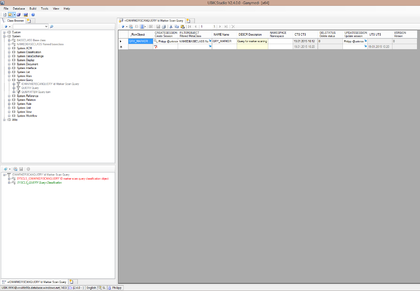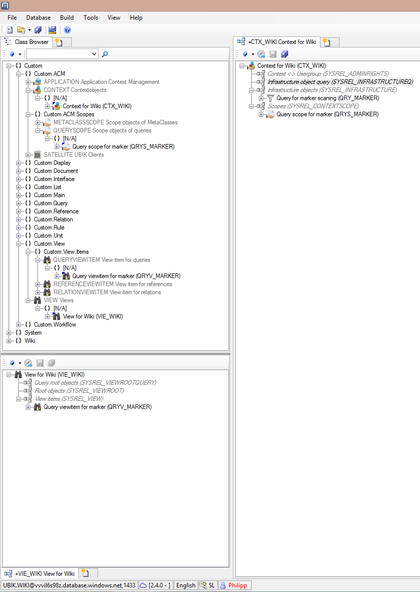Difference between revisions of "HowTo:Make an Object be found by Optical Codes"
| Line 6: | Line 6: | ||
# Set the according filter object ('''FILTEROBJECT''') similar as for other queries (e.g. [[Create_a_new_Query]])<br/>[[File:UI_Marker_scaning01.png|420 px|border|alt=Create a new Query|Create a new Query]] | # Set the according filter object ('''FILTEROBJECT''') similar as for other queries (e.g. [[Create_a_new_Query]])<br/>[[File:UI_Marker_scaning01.png|420 px|border|alt=Create a new Query|Create a new Query]] | ||
# Add this new query to the list of [[infrastructure]] objects | # Add this new query to the list of [[infrastructure]] objects | ||
| − | # Prepare and add a | + | # Prepare and add a [[QUERYSCOPE]] to the [[ACM]] |
| − | + | # Prepare and add a [[VIEWITEM]] to the view used in the [[Context]] of the ACM<br/>[[File:UI_Marker_scaning02.png|420 px|border|alt=infrastructure|infrastructure]] | |
'''Preparing the object''' | '''Preparing the object''' | ||
Revision as of 11:04, 26 January 2015
Loading a list of objects identified via a Barcode or QR-Code on the UBIKCLIENT implies that the object and search mechanism is configured and used accordingly.
Server
Preparing a Scan-Query
- Create a new Query classified as SYSCLS IDMARKERSCANQUERY
- Set the according filter object (FILTEROBJECT) similar as for other queries (e.g. Create a new Query)

- Add this new query to the list of Infrastructure objects
- Prepare and add a QUERYSCOPE to the ACM
- Prepare and add a VIEWITEM to the view used in the Context of the ACM

Preparing the object
- Classify the object's MetaClass as SYSCLS ID MARKER QUERY and implement the necessary properties

- Enter the value of the Barcode, QR-Code or the Marker ID in the property
Mobile Client
- Start the QR-Code activity if you want to load an object via Barcode or QR-Code
- After scanning a known code the client tries to fetch the objects, identified by this code
